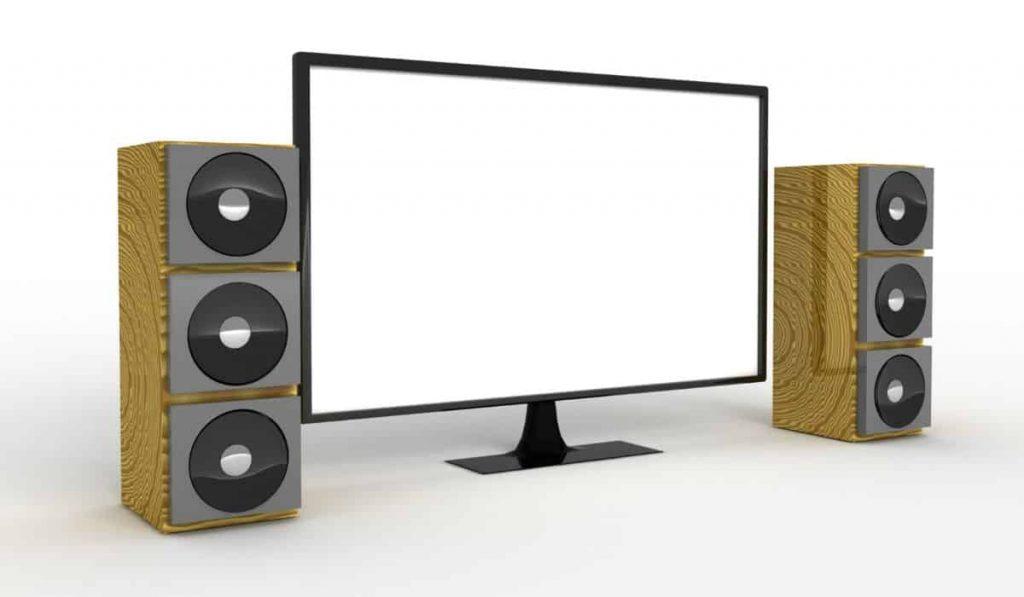Many people are unsure of how loud their rear surround speakers should be. There are many factors that go into setting the volume of your rear surround speakers, such as the size of your room, the other speakers in your system, and your personal preferences. Ultimately, it is up to you to decide how loud your rear surround speakers should be. However, there are a few things to keep in mind that will help you make the best decision for your home theater system.
The Role of Rear Surround Speakers

Rear surround speakers are typically used to create an immersive sound experience in a home theater setup. They are typically placed behind the viewing area, and are used to create a surround sound effect.
There are a few different ways to set up rear surround speakers. The most common method is to use two speakers, placed at either side of the viewing area. Another method is to use four speakers, placed in the four corners of the room.
Rear surround speakers should be set at a lower volume than the front speakers. This is because they are typically used to create ambient sound effects, rather than being the main focus of the sound.
The exact volume level will vary depending on the size of the room and the other speakers in the system. Generally speaking, the rear speakers should be about 20-30% lower than the front speakers.
How loud should rear surround speakers be?
It depends on the size of your room, how many people are watching the movie, and how loud the front speakers are. If you have a small room and few people, the rear surround speakers should be turned down so they don’t overpower the front speakers. If you have a large room and many people, the rear surround speakers should be turned up so they can be heard over the front speakers.
Why décor and speaker placement matter
Decor and speaker placement are important for a number of reasons. First, they can impact the sound quality of your system. Second, they can affect the way your system looks. And third, they can affect the way your system functions.
Sound quality is affected by the way sound waves interact with the surfaces in your room. If you have hard surfaces (like concrete walls), the sound will bounce around and be more diffused. This can make it harder to hear the individual sounds in your system. On the other hand, if you have soft surfaces (like carpets or curtains), the sound will be absorbed and the individual sounds will be more distinct.
The way your system looks is also affected by decor and speaker placement. If you have a lot of clutter in your room, it can make your system look messy and cluttered. And if your speakers are placed in an awkward spot, it can make your system look unbalanced.
Finally, the way your system functions can be affected by decor and speaker placement. If you have your system in a room that gets a lot of sunlight, the heat can cause the system to overheat and shut down. And if your speakers are placed too close to walls, they can block the sound and make it harder to hear.
Other factors to consider
There are a few other factors you might want to consider when determining how loud your rear surround speakers should be. One is the size of your room. If you have a small room, you might not need your rear surround speakers to be as loud as someone with a larger room.
Another factor to consider is the type of content you’ll be watching/listening to. If you mostly watch movies with a lot of action, you might want your rear surround speakers to be a bit louder than if you mostly watch TV shows or listen to music.
Finally, it’s worth considering how much of a “immersive” experience you’re looking for. If you want to really feel like you’re in the middle of the action, you’ll want your rear surround speakers to be pretty loud. But if you’re just looking for a little bit of background sound, you might not need them to be quite as loud.
Frequently Asked Questions [FAQs]
How Loud Should Rear Surround Speakers Be?
Rear surround speakers should be set to a level that is comfortable for you. If you are using a receiver, there is usually a setting for “rear surround speakers” that you can adjust. If you are using a sound bar, you will need to consult the product’s manual to find out how to adjust the volume of the rear surround speakers.
How Can I Tell If My Rear Surround Speakers Are Too Loud?
One way to tell if your rear surround speakers are too loud is if you find yourself constantly adjusting the volume. If you find that you are constantly turning the volume up and down, it might be a good idea to adjust the level of your rear surround speakers.
How Can I Tell If My Rear Surround Speakers Are Not Loud Enough?
If you find that you are not getting the full surround sound experience, it might be because your rear surround speakers are not loud enough. Another way to tell if your rear surround speakers are not loud enough is if you find yourself constantly turning up the volume on your TV or receiver.
What Happens If I Set My Rear Surround Speakers Too Loud?
If you set your rear surround speakers too loud, you might find that the sound is overwhelming and not enjoyable. Additionally, you might find that the sound is distorted or unclear. If you find that the sound is too loud, you can always adjust the level down until it is more comfortable for you.
What Happens If I Set My Rear Surround Speakers Too Quiet?
If you set your rear surround speakers too quiet, you might not be able to hear them properly. Additionally, you might find that the sound is not as immersive as it could be. If you find that the sound is too quiet, you can always adjust the level up until it is more comfortable for you.
Conclusion
If you are looking for the perfect sound experience, you should make sure that your rear surround speakers are just as loud as your front speakers. This way, you can enjoy the full soundscape that your home theater has to offer.


